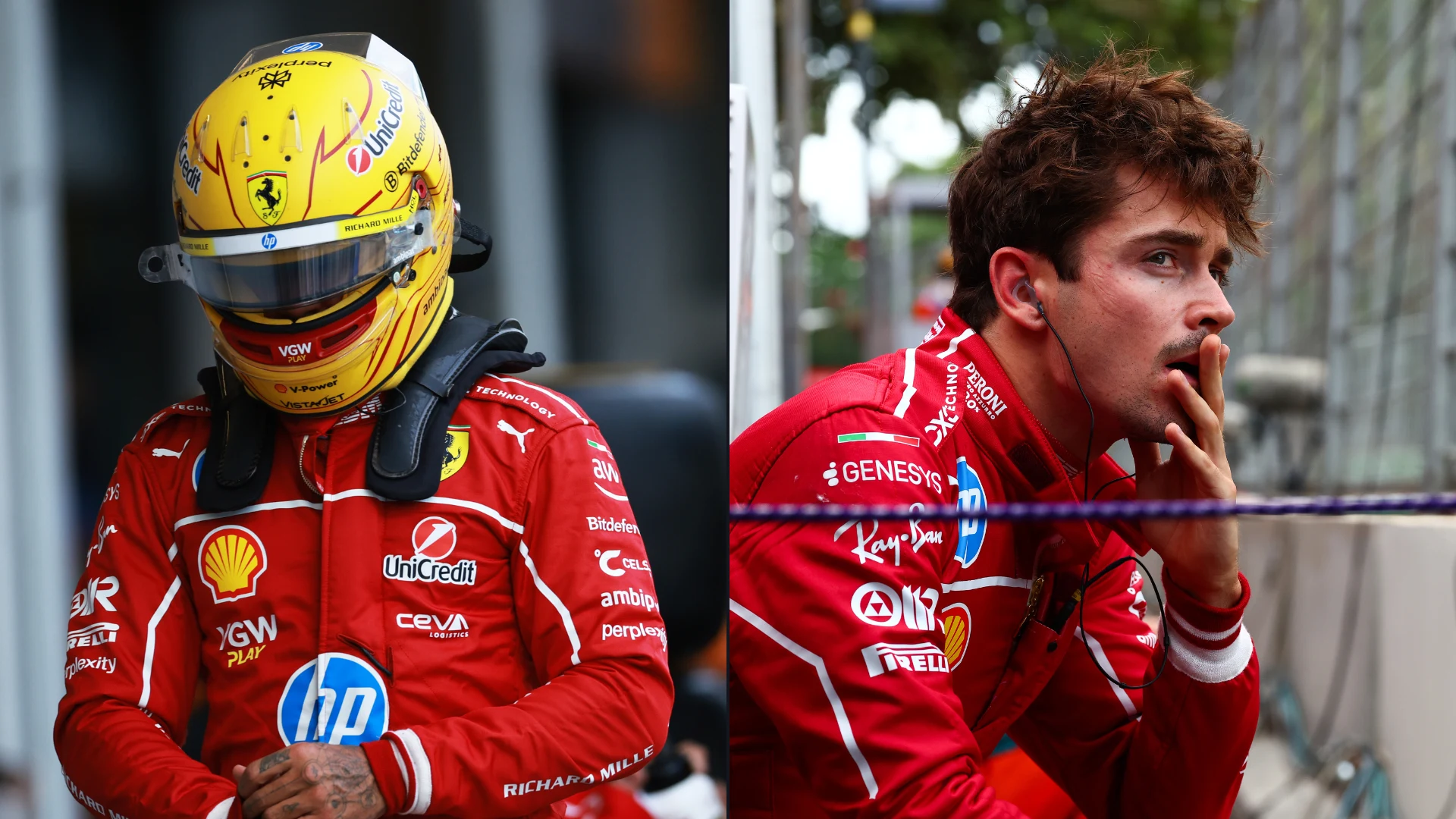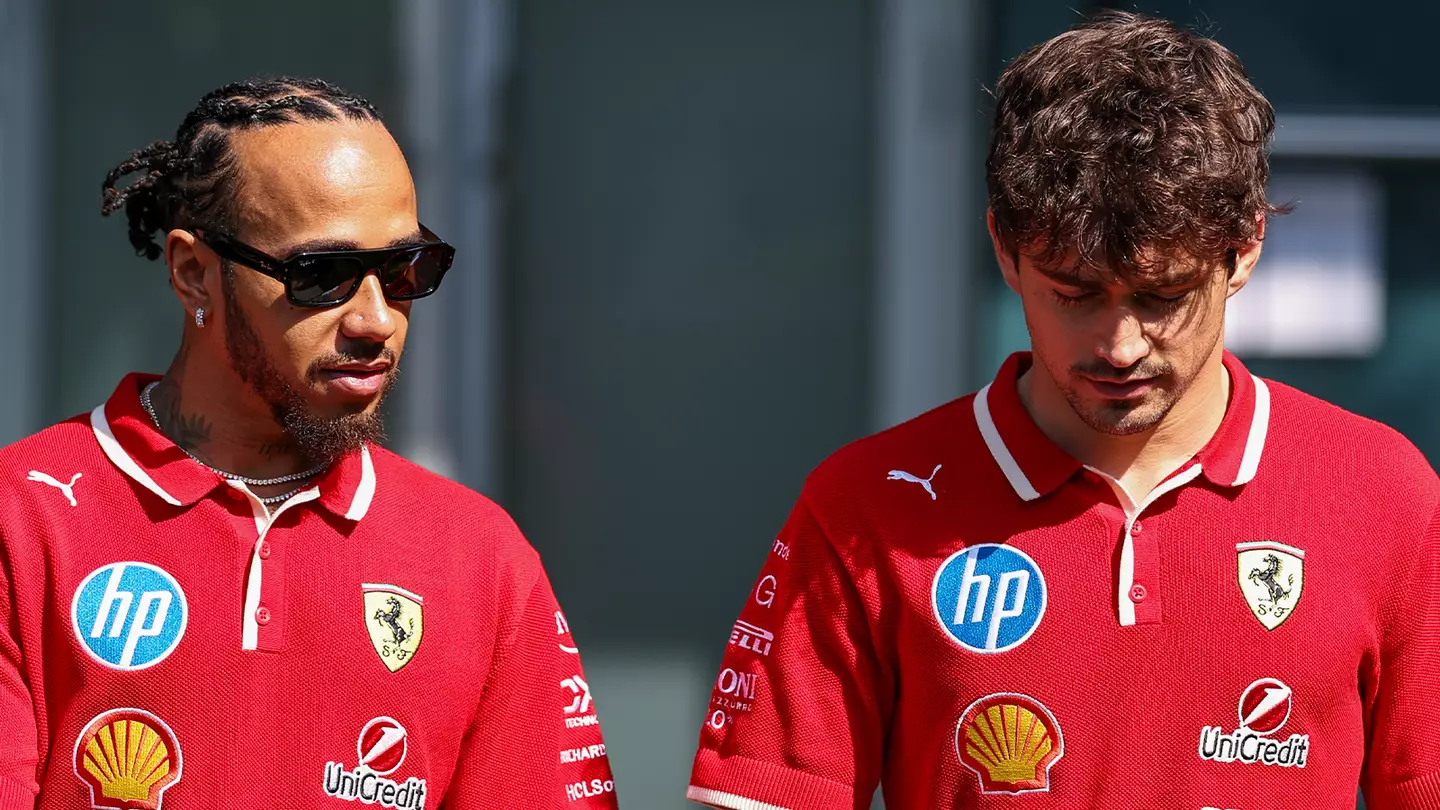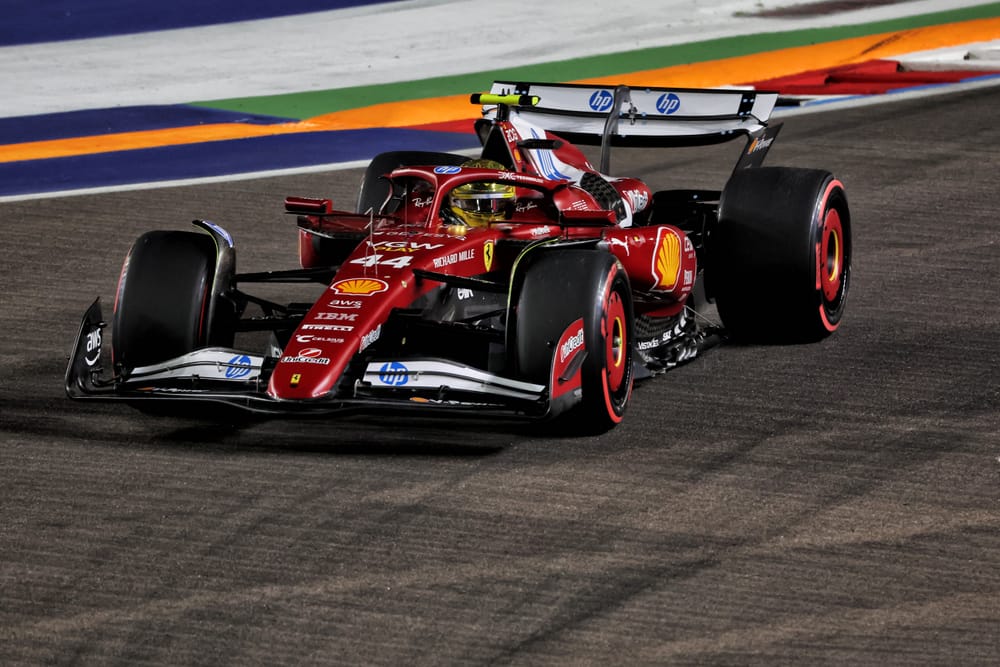The neon-drenched spectacle of the Singapore Grand Prix is an environment designed to push human and mechanical limits to their absolute breaking points. It is a crucible of concentration, where a single micro-second lapse in judgment or a three-degree fluctuation in tire temperature can mean the difference between glory and strategic oblivion.
In the qualifying session of the 2025 Singapore GP, a circuit already notorious for delivering chaotic narratives, the cold, hard numbers on the time sheets—Lewis Hamilton P6, Charles Leclerc P3—told only a fraction of a story that will undoubtedly be remembered as the definitive turning point in Ferrari’s turbulent season.
Beneath the veneer of an ostensibly sub-par qualifying result for the seven-time World Champion, a silent revolution was taking place. It was a transformation underscored by a single, simple, yet profoundly resonant phrase uttered by Hamilton: “This car is starting to talk to me.”
In the often-sterile, driven world of Formula 1, such words can sound like poetic hyperbole, but in the context of Hamilton’s tumultuous transition to Maranello and the chronic inconsistency of the SF-25 chassis, this was a statement of strategic intent and emotional conquest.
It was a signal to the entire paddock that the most decorated driver in history was no longer fighting his machine; he had begun to understand its secret language, and in doing so, had initiated the necessary foundation to drag the Scuderia back into contention.

The Architect of Frustration: Leclerc’s Strategic Maze
To truly grasp the magnitude of Hamilton’s quiet success, one must first appreciate the depth of the challenge facing Ferrari. The opening voice in the paddock belonged to Charles Leclerc, whose third-place slot masked a frustration rooted in systemic issues. Leclerc, a man who lives and breathes for pole position, was left struggling to comprehend how a weekend that started with such promise—a feeling he described as “really, really strong” in Q1—had once again derailed into a “not optimizing the sessions” scenario.
The source of the frustration, as detailed by Leclerc himself, was a series of small, compounding operational errors: the ill-timed wait in the pit lane, the inevitable loss of precious tire temperature, the compromised out-lap that used up the tire’s optimal performance window. These are the minute, almost invisible details that differentiate a pole lap from a podium miss. “All these different things just add up to not optimizing the sessions,” he noted .
Leclerc’s uncertainty regarding the root cause—”Is that something new in the last couple of races or have you felt that other circuits or is it circuit specific” ?—is a microcosm of Ferrari’s challenge. The team arrived in Marina Bay with an explicit obligation to experiment, to try and locate the SF-25’s elusive competitive balance. The street circuit, with its emphasis on traction, rear stability, violent braking, and constant direction changes, brutally exposes any existing chassis weaknesses. Leclerc, opting for a more “neutral and balanced package” , sought pure speed on the long lines, but at the expense of corner stability. His car was faster but more demanding, forcing him into “microcorrections at the entrance of the slower curves” , an exhaustive process that erodes confidence and lap time alike. His struggle was a vivid demonstration of the SF-25’s ongoing complexity.
Hamilton’s Calculated Sacrifice: Trading Speed for Soul
Hamilton’s approach was the antithesis of the aggressive, immediate-result-focused style often expected in qualifying. His P6 was, in effect, a deliberate sacrifice, a technical choice made not to maximize one-lap glory, but to accelerate his understanding of the Ferrari’s fundamental dynamics.
Where Leclerc prioritized pace, Hamilton prioritized consistency and control. He opted for a more aggressive configuration, demanding greater rear aerodynamic load. This came at a steep price—a deficit of 5 to 6 km/h in maximum speed compared to his teammate, which translates to almost two-tenths of a second per lap . For any driver, giving away speed is counter-intuitive; for a great champion, it is a sign of a larger strategic vision. It was a thoughtful step, “part of the learning and tuning process that Hamilton carries out with the SF25” .
The telemetry revealed the genius in this apparent trade-off. While Leclerc fought the car, Hamilton navigated it. His heavier downforce configuration allowed him to maintain “traced cleaner and more consistent” , albeit at the cost of losing out on initial acceleration out of the corners.
The biggest mechanical hurdle remains the SF-25’s Achilles’ heel: chronic overheating of the soft compound tires. In Q3, the data showed Hamilton completed his quick lap with a critical temperature spike of “more than 3° C at the rear axle” . This technical detail is the single explanation for his performance drop-off in the demanding third sector. His lap was solid in the first two, but the progressive adhesion loss caused by the overheating rubber killed his speed when the rear axle was most strained .
Furthermore, the rear axle’s inherent instability is a direct counterpoint to Hamilton’s established driving style, which relies on a ‘planted’ rear to facilitate late braking and aggressive rotation. The SF-25 was ‘nervous’ in rapid transitions, forcing him into a style that was “less aggressive and more progressive” .
Yet, this is where the Singapore story truly pivots. Instead of fighting the instability, Hamilton was noticed to be “anticipating it, correcting before it appeared” . This is the definition of achieving synchrony; the car was no longer being driven reactively, but instinctively. This quiet adaptation is the indispensable previous step before the leap towards absolute performance .

The Emotional Calculus: Grief and the SF-25
The technical details, however calculated, take on a deeper, almost poignant significance when viewed through the lens of Lewis Hamilton’s personal week. The Grand Prix was contested under a cloud of personal tragedy, as Hamilton had recently lost his beloved dog, Rosco, a constant and cherished companion for over a decade .
Formula 1 is a sport that demands emotional sterilization, an environment that does not forgive distraction, yet Hamilton arrived at the most physically and mentally grueling circuit on the calendar in the midst of a silent, profound duel with personal grief.
Instead of allowing the pain to become a weight that subtracted from his performance, he channeled it . The track became a place to process his loss through the relentless, disciplined action of driving. This internal process—the struggle between personal sadness and competitive rigor—is the emotional key that unlocks the meaning of his quote.
When Hamilton declared that the car was “starting to speak to me,” he wasn’t just referring to the telemetry data; he was talking about himself . He saw his own reflection in the SF-25: an unpredictable, complicated, imperfect machine that, under immense pressure, he was finally beginning to understand, to listen to, and to answer. It was the moment he stopped trying to impose his will and decided to flow with the car, exhibiting a rare display of “emotional intelligence to recognize that evolution begins when you stop fighting and start understanding” .
Singapore was the scene of this emotional reconstruction. It was the first race where he was not trying to prove that he already understood the car, but simply to hear what the car told him .

The Birth of a Winning Dynamic: Ferrari’s New Trajectory
The impact of this shift extends far beyond one driver or one qualifying session. What happened in the 2025 Grand Prix was a forceful statement that something fundamental is changing within Ferrari.
Ferrari entered the 2025 season burdened by the structural defects of its predecessor, particularly the Achilles’ heel of rear stability and traction. For weeks, the team lacked a clear, unified direction, the differences in driving styles between Leclerc and Hamilton only exacerbating the uncertainty.
Singapore, however, consolidated a pattern: Hamilton is beginning to influence the car’s development direction . His insistence on stability, his choice of greater rear load, and his active adaptation to the SF-25—all point to an evolution that bypasses immediate results in favour of long-term construction. Hamilton is not chasing isolated victories; he is “building a platform to fight for the title in the second half of the season” .
This singular focus fundamentally re-casts Ferrari’s position in the championship fight. Up until this point, the Italian team had been perceived as a “secondary actor”—capable of podiums, yes, but lacking the necessary consistency to challenge the regularity of McLaren or the explosiveness of Red Bull.
Now, with a Hamilton who is achieving synchrony with the Red Machine from within, the dynamic shifts entirely. When a pilot of his calibre enters this state of alignment, he doesn’t just improve his own performance; he “drags the entire team with him” . He modifies processes, aligns technical objectives, demands faster answers from the development cycle, and elevates the internal pressure for excellence.
The sixth place in qualifying, when divorced from the context, is merely a number. But when the sector performance, the strategic decisions, and the profound emotional evolution expressed by Hamilton are considered, it reveals something far more valuable than a pole position: The birth of a winning dynamic. This dynamic is forged not from the comfort of an already-perfect car, but from the grinding effort, the ability to learn under pressure, and the emotional wisdom to understand that mastery begins when the fighting ends.
Singapore was not a conclusion; it was a promise. It was the first photograph of Lewis Hamilton’s true resurgence at Ferrari, the quiet moment when the greatest driver of his generation decided to build a new legendary chapter, brick by laborious, dedicated brick. The SF-25 is talking, and finally, Lewis Hamilton is listening.